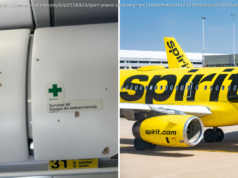Monthly tests are the latest in similar readiness steps by Hawaii amid renewed tensions between the United States and North Korea.
As tensions between the United States and North Korea continue to simmer, Hawaii will start a statewide test on Friday of a Cold War-era early warning system designed to inform its residents of an impending nuclear attack.
The Attack Warning Tone, described as a “wailing tone,” will be heard for about 50 seconds on the first business day of every month, beginning on Dec. 1. It will sound after the regular monthly test of the sirens that warn residents of hurricanes or tsunamis, the Emergency Management Agency said in a news release on Monday that was intended to update the population on what the agency is doing to “prepare our state for a nuclear threat.”
For several weeks, the authorities in Hawaii have been discussing their plans to sound the Attack Warning Tone. On Nov. 8, Hawaii’s emergency management agency released a public service announcement featuring its administrator, Vern Miyagi, speaking on the importance of the tone while ukulele music played lightly in the background.
“The attack warning signal advises everyone to take immediate shelter — get inside, stay inside, stay tuned,” Mr. Miyagi said.
The last time Hawaii residents heard the attack warning siren test was in the waning days of the Cold War. The siren, if used as an actual warning, would signal to people that they should immediately seek shelter, Toby Clairmont, the executive officer of the emergency agency, said in a report by the Honolulu Star-Advertiser earlier this month.
While the officials did not link the siren test to a specific development in North Korea, it is the latest step the state has taken to prepare its population of more than 1.4 million people for the possibility of a North Korean nuclear strike.
In July, after North Korea tested an intercontinental ballistic missile that appeared capable of hitting America’s two most western states — Alaska and Hawaii — Hawaii’s emergency management authorities released guidelines on how to survive a nuclear detonation, offering advice to seek shelter in a blast-resistant structure within minutes.
Friday’s test comes amid reports that North Korea has been conducting missile engine and fuel tests in recent weeks, with the goal of achieving nuclear-tipped intercontinental ballistic missile capabilities as early as next year, South Korea’s lead official on the North, Unification Minister Cho Myoung-gyon, said on Tuesday.
North Korea has not conducted a missile test since Sept. 15, but it claimed to have detonated a hydrogen bomb on Sept. 3, in its sixth and most powerful nuclear test yet.






